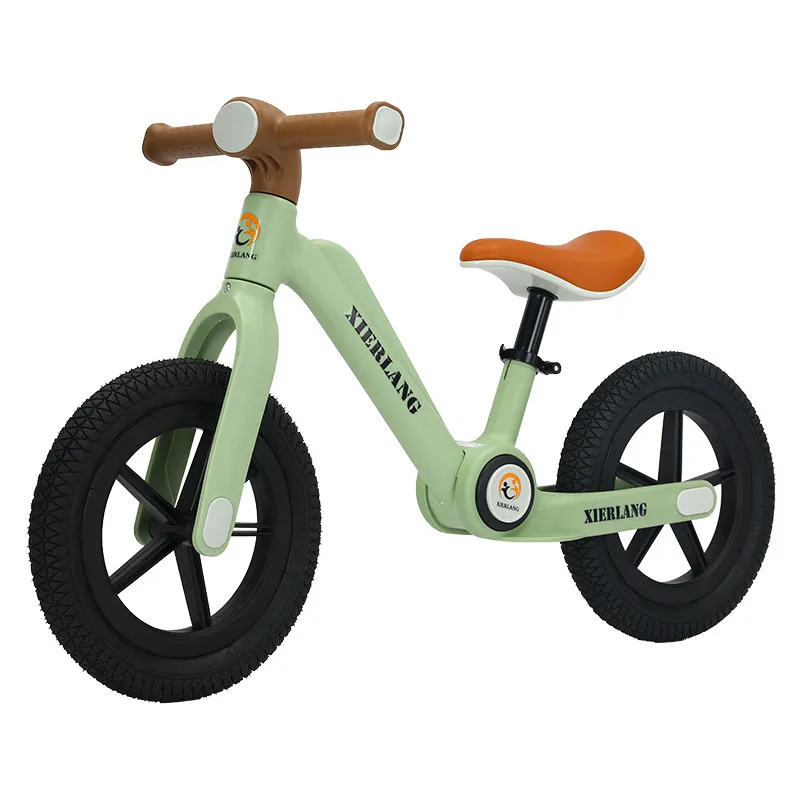Effective Strategies for Helping Children Achieve Balance on Their Bicycles
How to Teach a Kid to Balance on a Bike
Teaching a child to ride a bike is a formative experience that combines fun, adventure, and valuable lessons in balance and coordination. Mastering the art of balance is crucial for any budding cyclist, and with the right approach, this skill can be learned with ease and enjoyment. In this article, we will explore effective methods to help your child learn to balance on a bike while ensuring the process is delightful for both of you.
The Right Equipment
Before embarking on the journey of teaching your child to ride a bike, it's essential to ensure that you have the right equipment. A properly fitted bicycle is crucial; the child should be able to reach the ground with their feet while sitting on the seat. This allows them to feel secure as they learn to balance. A bike with a lightweight frame is preferable, as it will be easier for them to maneuver.
In addition to the bike, safety gear is important. Make sure your child wears a properly fitted helmet to protect their head. Knee and elbow pads can also provide extra protection, giving them the confidence to experiment with balancing without fear of hurting themselves.
Starting with Balance Bikes
One effective method to teach balance is by starting with a balance bike. These bikes do not have pedals and are designed specifically to help children develop their balancing skills before they tackle pedaling. Kids can sit on the balance bike, push off with their feet, and glide, allowing them to feel the sensation of balancing without worrying about pedaling.
If a balance bike is not available, you can modify a regular bike by removing the pedals. Lower the seat so that your child can place their feet flat on the ground, enabling them to walk the bike as they gain confidence. Once they feel comfortable gliding along, reintroducing the pedals will be a natural next step.
Finding a Safe Learning Environment
Choose a safe, flat, and open area for practice—a quiet park or an empty parking lot works well. Ensure that the ground is smooth and free of obstacles. This will allow your child to focus solely on learning to balance without distractions or hazards.
how to teach a kid to balance on a bike

The Process of Learning to Balance
1. Gliding Encourage your child to sit on the bike and use their feet to push off the ground, allowing them to glide forward. Start with short glides, gradually increasing the distance as they gain confidence. This exercise helps develop the sense of balance needed for cycling.
2. Kickstands Off Once your child is comfortable gliding, teach them to lift their feet off the ground while gliding. You can hold the back of the seat to provide support initially. As they gain balance, begin to loosen your hold until they can maintain their balance independently.
3. Introducing Pedals When your child is able to glide comfortably for longer distances without support, it's time to introduce the pedals. Reattach the pedals and explain how to use them to gain momentum. Place your child's dominant foot on one pedal while the other foot pushes off the ground. As they push off, they can start pedaling to maintain their balance and momentum.
4. Guided Practice Run alongside your child, providing encouragement and support. If they start to lose their balance, gently guide them to recover. It's vital to remain calm and reassuring, as anxiety can lead to hesitation.
5. Practice Stopping and Steering As your child becomes more confident, teach them how to steer and stop. Start with gentle turns and gradual braking, ensuring they know how to use the brakes effectively to come to a safe stop.
Encourage and Celebrate Progress
Throughout the learning process, celebrate your child's achievements, no matter how small. Positive reinforcement is key to building their confidence. Encourage them to set goals, and reward their progress with praise or small treats. The joy of riding should be the primary motivation.
Conclusion
Teaching a child to balance on a bike is a rewarding experience that requires patience, encouragement, and a little creativity. By focusing on balance first, choosing the right environment, and using the correct techniques, you can help your child become a confident rider. The thrill of cycling will soon become a cherished memory, paving the way for a lifetime of adventure on two wheels. With your support and guidance, they will not only learn to ride; they will also learn to embrace the joys of independence and exploration.
-
The Perfect Baby TricycleNewsAug.11,2025
-
Ride into Fun with Bikes for KidsNewsAug.11,2025
-
Ride into Adventure with the Perfect Kids Balance BikeNewsAug.11,2025
-
Fun and Safe Riding with the Best Childrens ScootersNewsAug.11,2025
-
Find the Perfect Childrens Bike for Your Little OneNewsAug.11,2025
-
Explore the Best Baby Tricycles for Your Little OneNewsAug.11,2025
-
Three-Wheel Light-Up Scooter Benefits for KidsNewsJul.11,2025








